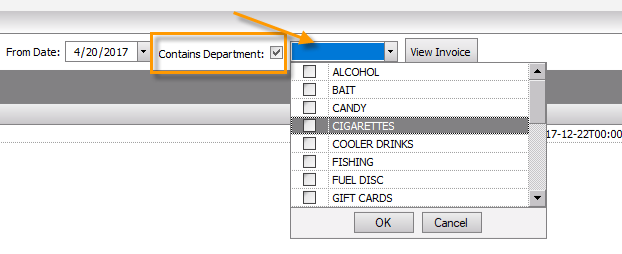Item Level Inventory
Once Inventory data has been downloaded from the handheld or imported into S2K from a 3rd party, click on Inventory and then click Take Inventory by SKU
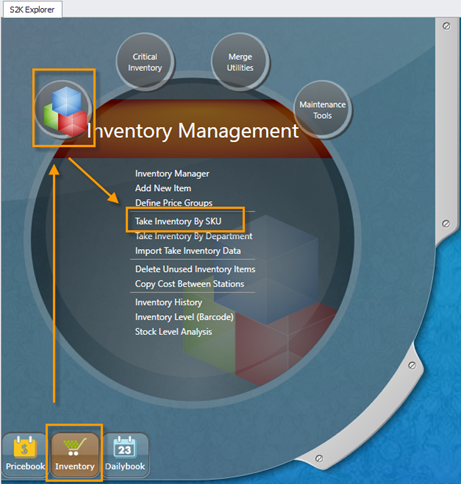
Select a Station from the dropdown box and the inventory data will load
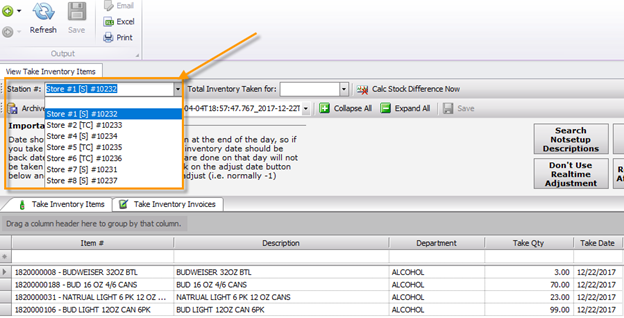
Once the Take Inventory data has loaded, information should be checked for accuracy and date. Please spot check the following items:
1. Category/Department– check for accuracy and fix any items that are ‘not setup’ or ‘unused’. To update the department, right click on the item and select ‘item details’.

To make changes in the item details screen, click the ‘Edit’ button to make changes and then click ‘Save’.
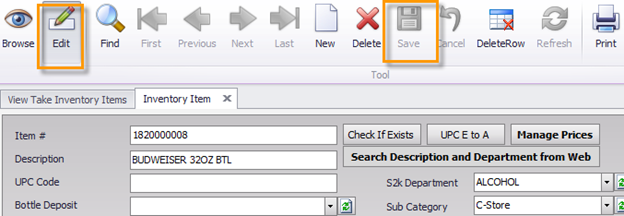
To look at the history of an item for research purposes or to troubleshoot a discrepancy, right click on the item and select ‘View Inventory History’. This will show all activity for the item selected.

2. Take QTY- Look for any amounts that appear to be irregular or large and click in the field to fix/change the stock number.
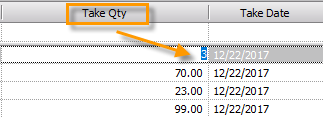
Click the Save button when complete.

3. Take Date- Make sure only 1 date is displayed in this field.
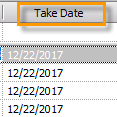
If the take date needs to be adjusted, the use the adjustment tools at the top of the page

1. Change buttons- Select either ‘Change All’ or ‘Change Selected’
2. Adjust to Day- Select the desired date from the calendar dropdown via ‘adjust to day’
3. Adjust- User the ‘Adjust’ tool in the upper right hand corner of the screen to update changes. The new take date will automatically be assigned to each item.
PROCESS THE TOTAL INVENTORY
Once all of the above items have been addressed, the Inventory is ready for processing. There are 2 steps to processing the Take Inventory:
1. Total Inventory Taken For: Check the box next to each department that is a FULL department inventory. The system is designed to zero out any stock levels for items that are not included in the take, if the department box is checked. This is also referred to as ‘resetting’ the department.
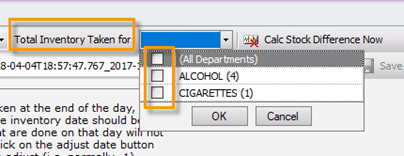
2. Calc Stock Difference Now – Click on the Calc Stock Difference Now button to process the inventory and view the adjustment/shrink.

3. Preview– A print preview will display, which allows you to check data before final Take Inventory Invoice is created.
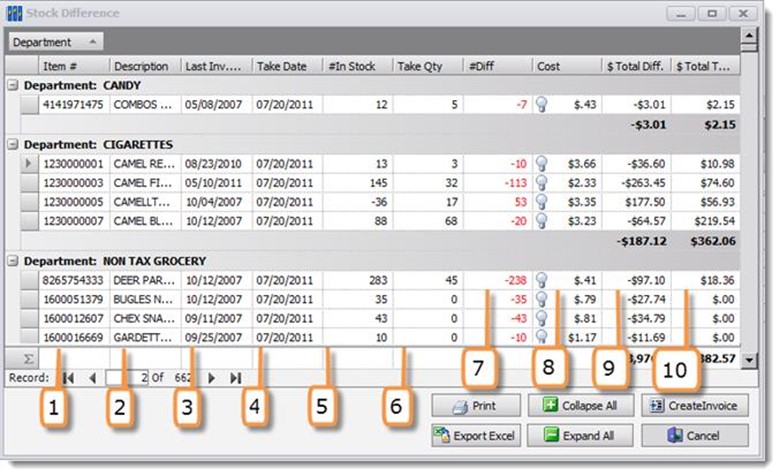
(In reference to the picture above) This print preview is designed to show the difference between the current stock level in the system and what was counted in the Take Inventory.
Additionally, the overall value of what was counted in the Take Inventory is shown.
The system values this difference both in QTY and cost. The columns are as follows:
1. Item #- UPC
2. Description– Item description in S2K
3. Last INV– This is the last invoice date for the item
4. Take Date- date assigned as take date on previous screen
5. # In Stock– The current stock value in S2K prior to processing ‘Take Inventory‘
6. Take QTY- Stock value that was provided on previous screen for item
7. #Diff- The difference between the # In Stock and Take QTY
8. Cost- The current cost for the individual item
9. $ Total Diff- The dollar value of the difference at cost
10. $ Total Taken- The dollar value of the Take QTY column at cost
To Process the Inventory, the final step is to Create Invoice. Click the ‘Create Invoice‘ button

The system will show a job submission record at the bottom of the page

When finished, the preview window will disappear and bring you back to the take inventory page. Click the refresh button at the top of the page to update

The completed inventory invoice can now be found in the ‘Take Inventory Invoices‘ tab, shown below.
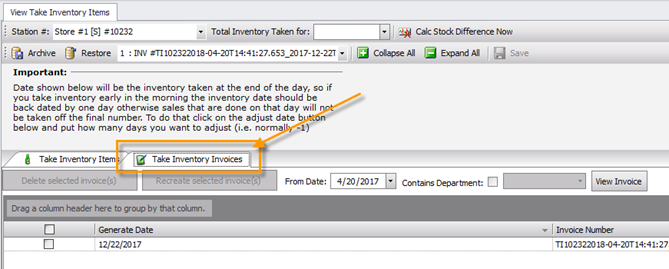
To open the invoice, double click on the invoice in the listing
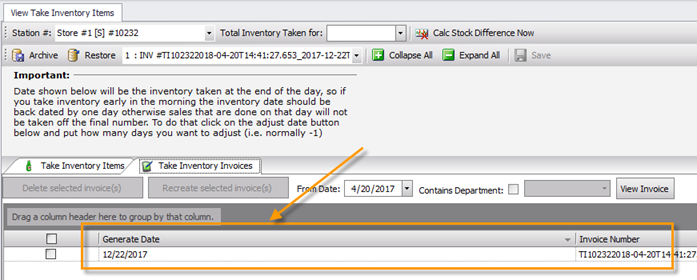
To delete or re-process an existing Take Inventory Invoice, click the box next to the desired inventory date and click either ‘Delete selected invoice(s)‘ OR ‘Recreate selected Invoice(s)‘.

To view past invoices, the ‘From Date‘ may need to be adjusted from the default. To change the date, select from the calendar in the dropdown box (pictured below).
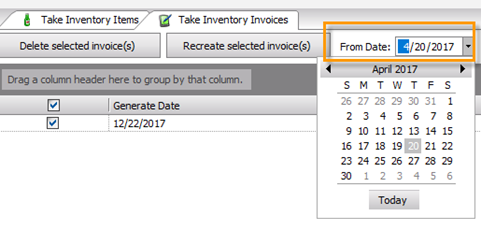
To view just a single department’s Take Inventory Invoices, check the box next to ‘Contains Department‘ and select the desired department.
